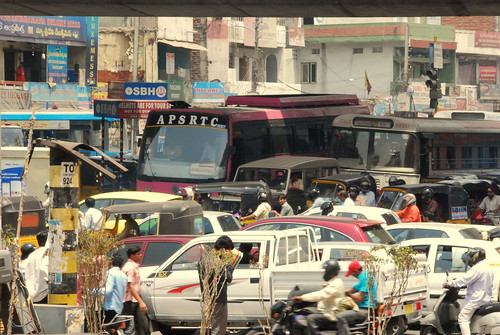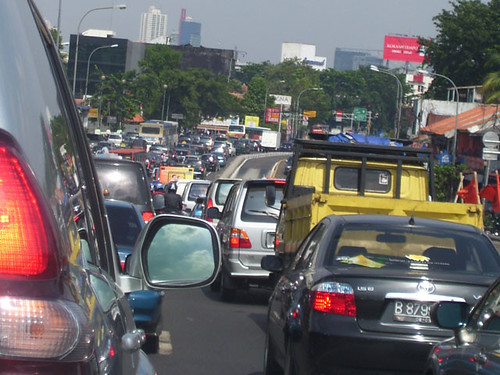
The Insurance Institute for Highway Safety recently reported that motorcyclists who ride racing style motorcycles known as "supersports" have driver death rates "nearly 4 times higher than motorcyclists who ride all other types of bikes." Capable of extreme acceleration and speed, supersports are particularly popular with young riders.
The Bureau of Transportation Statistics of the Research and Innovative Technology Administration today released “Motorcycle Trends in the United States”, a special report on the current and emerging trends involving street-legal motorcycles. During the last decade there has been a significant increase in the number of motorcycle sales and registrations in the United States. At the same time there has been a shift in the demographics of motorcycle users and increased focus on motorcycle safety issues. This report focuses on the current and emerging trends of vehicles, vehicle registrations, owner demographics, training and safetyinvolving street-legal (on-road and dual-purpose) motorcycles. Seen below is an extract of the report’s sections.
Vehicles
In the United States, although no universal or official definition exists, a motorcycle is a two- or three-wheel powered vehicle designed for on-road, off-road, or dual-purpose (on and off-road) use. On-road and dual-purpose motorcycles must meet federal and state certification standards and be licensed (registered) for use on public roadways, although light powered two-wheel vehicles with engines smaller than 50cc, known as mopeds or light scooters, as well as motorized bicycles, are typically allowed to operate on public roadways without registration. Motorcycle designs, technologies, and gear are expanding and evolving rapidly. While there is no universal standard, street-legal motorcycles in the United States are often grouped as shown in Box A. Laws regulating motorcycle equipment requirements for on-highway (street-legal) or off-highway operation, and insurance, age, licensing, and training requirements, vary across the U.S. 1
Vehicle Registrations and Sales
Because the majority of motorcycles in use must be registered for operations on public highways, registrations provide some indication of the number of motorcycles in use on public roadways each year. Motorcycle registrations in the United States have grown each of the past 10 years, from 3,826,373 in 1997 to 6,678,958 in 2006—a 75 percent increase overall.2 Sales of new street-legal motorcycles grew even more sharply over the same period, from 260,000 in 1997 to 892,000 in 2006 (a 243 percent increase), but declined slightly to 885,000 in 2007 (table 1).3 , 4
Motorcycle engine sizes and motorcycle weights are increasing in the United States. While new sales of motorcycles with engines of 750cc or more increased 54.0 percent in 2003 compared to 1998, and those with midsized engines of 450-749cc increased 16.6 percent, sales of motorcycles with smaller engine sizes decreased during the same period, especially in the midsized 350-449cc category, which declined 60.1 percent (table 2).
Between 2005 and 2007, sales of sport bikes (including supersport bikes) increased from 16 to 19 percent of all motorcycle sales (including off-road bikes, which are not distinguished from on-road motorcycles in the available total sales data); sales of touring bikes increased from 13 to 15 percent; sales of dual-purpose bikes increased from 3 to 4 percent, while sales of off-highway bikes decreased from 27 to 22 percent of total motorcycle sales (table 3).
During the first three quarters of 2008, total new on-highway (i.e., street-legal) motorcycle sales (excluding dual purpose motorcycles and scooters) declined 2.1 percent from the corresponding period in 2007, with reported sales of 548,747 in 2008 compared to 560,529 in 2007. Dual purpose motorcycle sales increased 29.4 percent, with sales of 39,805 units during the first three quarters of 2008 compared to 30,759 units during the same period of 2007. Concurrent with record fuel prices in 2008, scooter sales increased 50.6 percent. There were 69,227 units sold in the first three quarters of 2008 compared to 45,975 units sold in the first three quarters of 2007. Combining data for on highway motorcycles, dual motorcycles, and scooters gives total sales of 657,779 during the first three quarters of 2008 as compared to 637,263 during the same period of 2007, a modest 3.22 percent increase in units sold.5
Motorcycle Owner Demographics
Survey data from the Motorcycle Industry Council on motorcycle owner demographics for the 1985 to 2003 period reveals a shift towards older owners. The median age of owners increased from 27.1 years in 1985 to 41.0 years in 2003. From 1985 to 2003, the percentage of owners 40–49 years old increased from 13.2 to 27.9 percent, and the percentage of owners 50+ years old increased from 8.1 to 25.1 percent (table 4). Also, survey results for 2003 indicated that 90 percent of owners were male, while survey results for 1998 indicated that 92 percent of owners were male, a slight—but probably not statistically significant—trend consistent with growing female ownership.
Training
The Motorcycle Safety Foundation (MSF) offers motorcycle rider education and training programs and courses, and supports governmental programs by participating in research and public awareness campaigns and providing technical assistance to state training and licensing programs. 6 The MSF reports that about 4.5 million riders have graduated from their rider training courses since 1974. The Motorcycle Industry Council cites MSF data showing that the number of students trained in MSF courses has increased steadily from about 130,000 in 1996 to about 370,000 in 2006. During the same period, there has been an increase in MSF course training sites from about 875 to about 2,125. In 2006, there were just over 9,000 MSF certified RiderCoaches (experienced motorcyclists who complete an intensive preparation course to become trainers) compared to only 3,500 in 1996.
Most recently, the National Traffic Safety Division (NTSD) of the Transportation Safety Institute (http://www.tsi.dot.gov/), Research and Innovative Technology Administration, U.S. Department of Transportation developed a course on motorcycle safety program coordination (MSPC) to train motorcycle safety program managers at the state and federal level on the best practices, program fundamentals, and latest strategies for effective motorcycle program management. The MSPC course is sponsored by the National Highway Traffic Safety Administration (NHTSA) and intended to provide training to State Highway Safety Office program personnel and NHTSA Regional Program Managers to enable them to better facilitate and support a comprehensive motorcycle safety program in their state or region. The second of two pilot courses was completed in September 2008, with final course revisions based on experience with the pilots to be completed after that.
Safety
The growth in motorcycle sales and registrations in the United States has been accompanied by an increase in accidents, property losses, injuries, and fatalities involving motorcycles. As shown in table 5, from 1997 to 2007, the annual number of motorcyclist fatalities increased from 2,116 to 5,154 (a 144 percent increase), and the estimated number of motorcyclist injuries increased from 53,000 to 103,000 (a 94 percent increase).7
Although motorcycle registrations and vehicle-miles traveled both increased substantially from 1997 to 2006 (the last year for which registration data are currently available), these exposure measures do not account for all the growth in motorcyclist fatalities, because during that period, motorcyclist fatalities increased proportionately more than registrations and vehicle-miles traveled. From 1997 to 2006, annual motorcyclist fatalities increased from 2,116 to 4,837 (a 128.6 percent increase), while fatalities per 100,000 registered motorcycles increased from 55.3 to 72.3 (a 30.7 percent increase), and fatalities per million motorcycle miles of travel increased from 21 to 39 (an 85.7 percent increase).
Also, during that same period, estimated annual motorcyclist injuries increased from 53,000 to 88,000 (a 66 percent increase), while estimated injuries per 100,000 registered motorcycles declined from 1,374 to 1,311 (a 4.8 percent decrease), and estimated injuries per million motorcycle miles of travel increased from 522 to 707 (a 35.4 percent increase).
Analysis of factors accounting for increasing motorcyclist fatality rates is beyond the scope of this brief overview of motorcycle trends, but one trend of concern to public health and safety experts is the relaxation of motorcycle helmet laws (See Box B).8 , 9
Another emerging trend of concern to public health and safety experts is the growing popularity of racing-style motorcycles known as supersports, which have high power-to-weight ratios and are capable of extreme acceleration and speed (160+ mph). Although designed for the racetrack, supersport motorcycles are marketed and sold to the general public and have become especially popular among young riders. On September 11, 2007, the Insurance Institute for Highway Safety (IIHS) released a report showing that “motorcyclists who ride supersports have driver death rates per 10,000 registered motorcycles nearly 4 times higher than motorcyclists who ride all other types of bikes.”10 The IIHS report also noted that among fatally injured motorcycle drivers, those riding supersports are the youngest, with an average age of 27. For both 2000 and 2005, the death rate for riders of supersport bikes is twice that of sport bike riders and four times that for riders of other motorcycle types (See table 6).
PDF version of the full report, complete with Tables referenced above, can be found at:
http://www.bts.gov/publications/bts_special_report/2009_05_14/index.html










